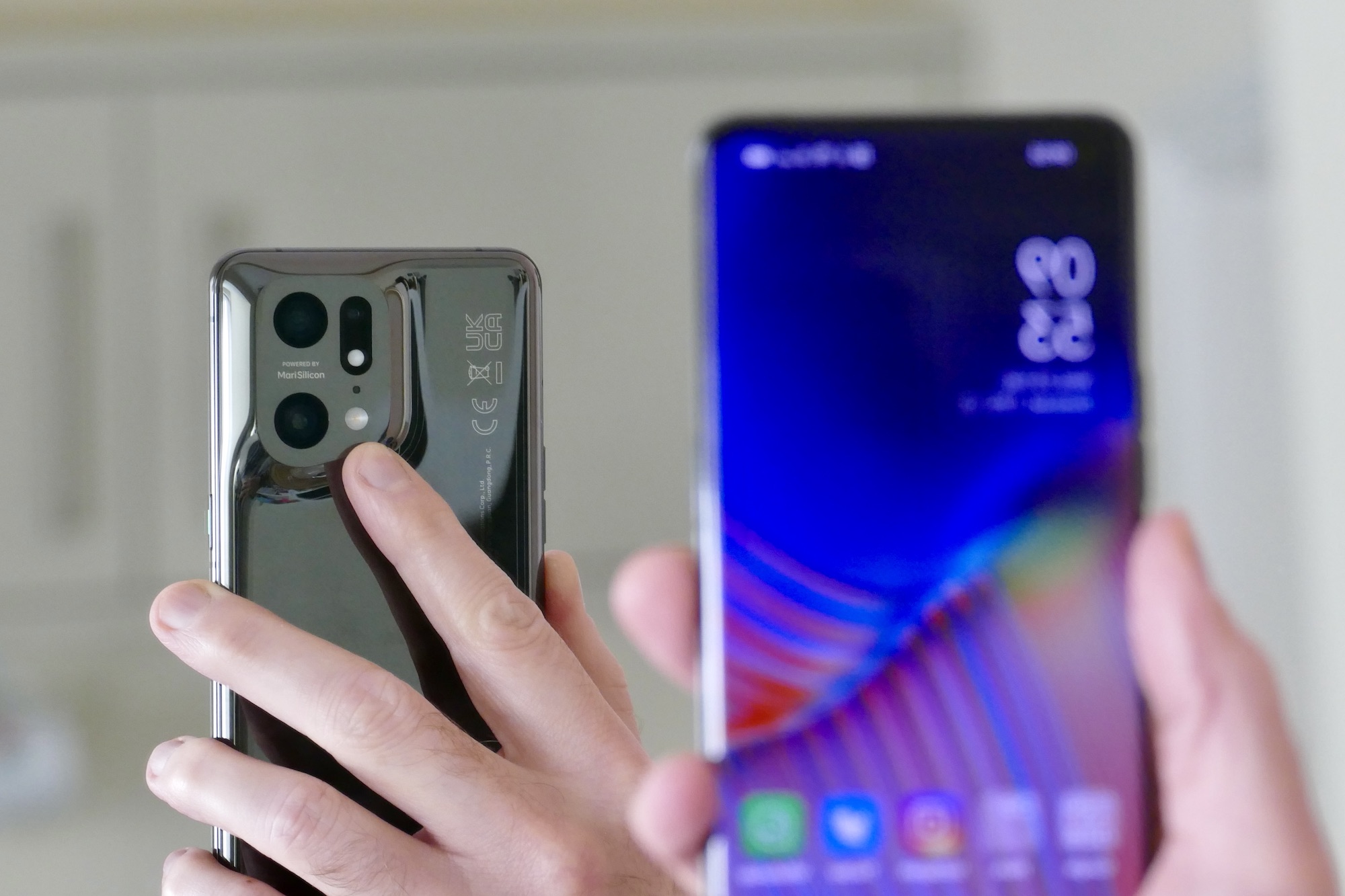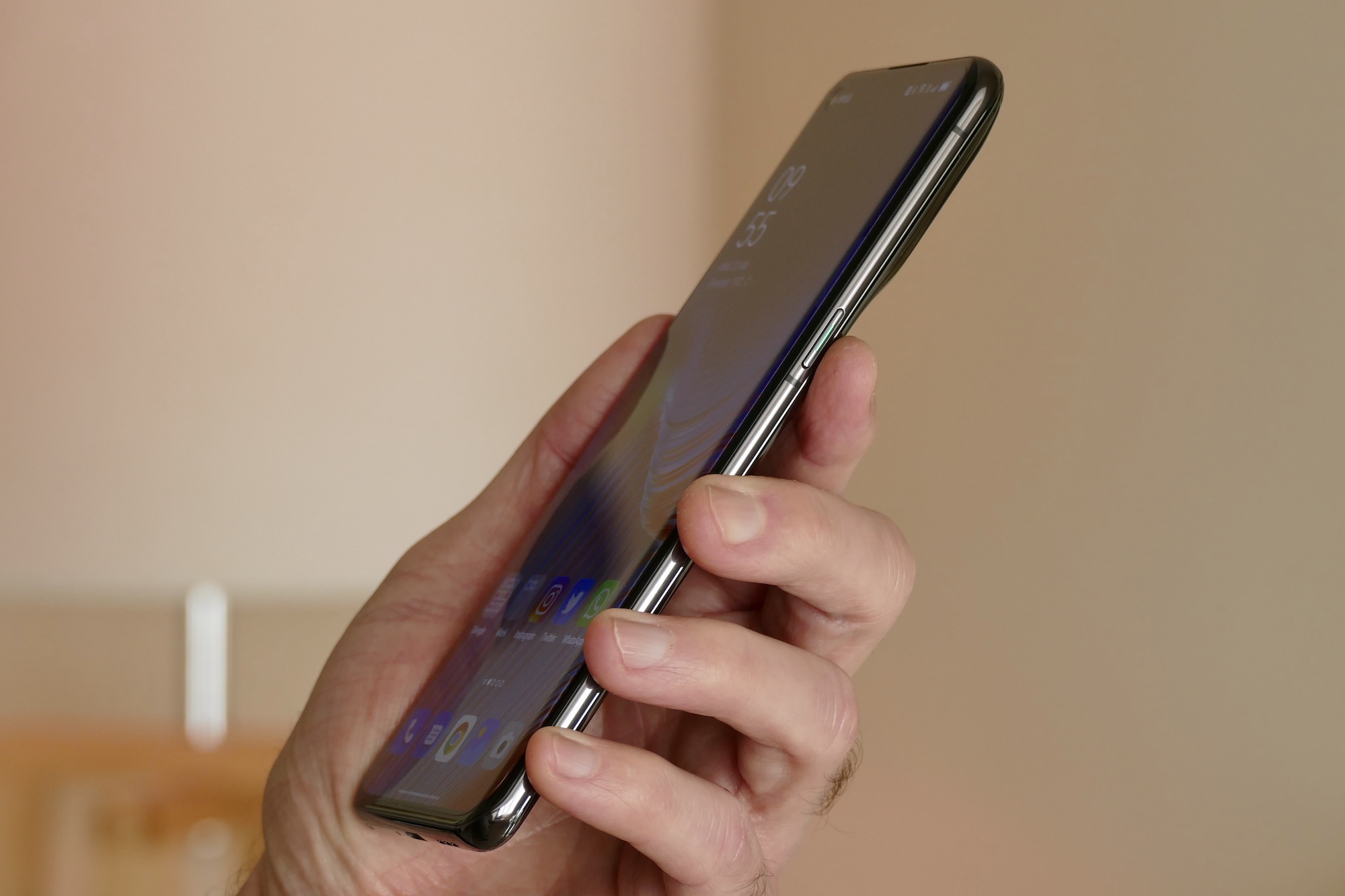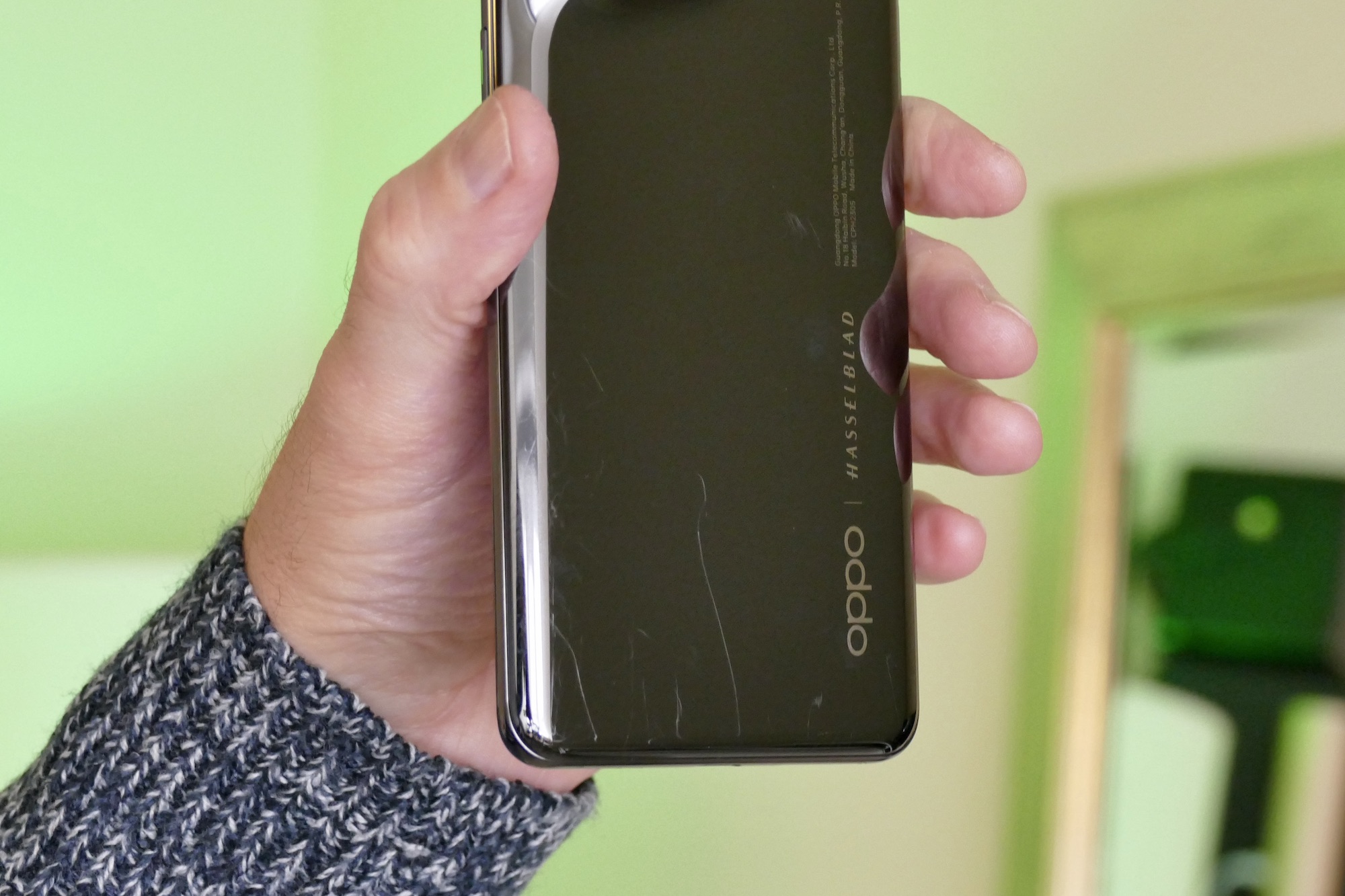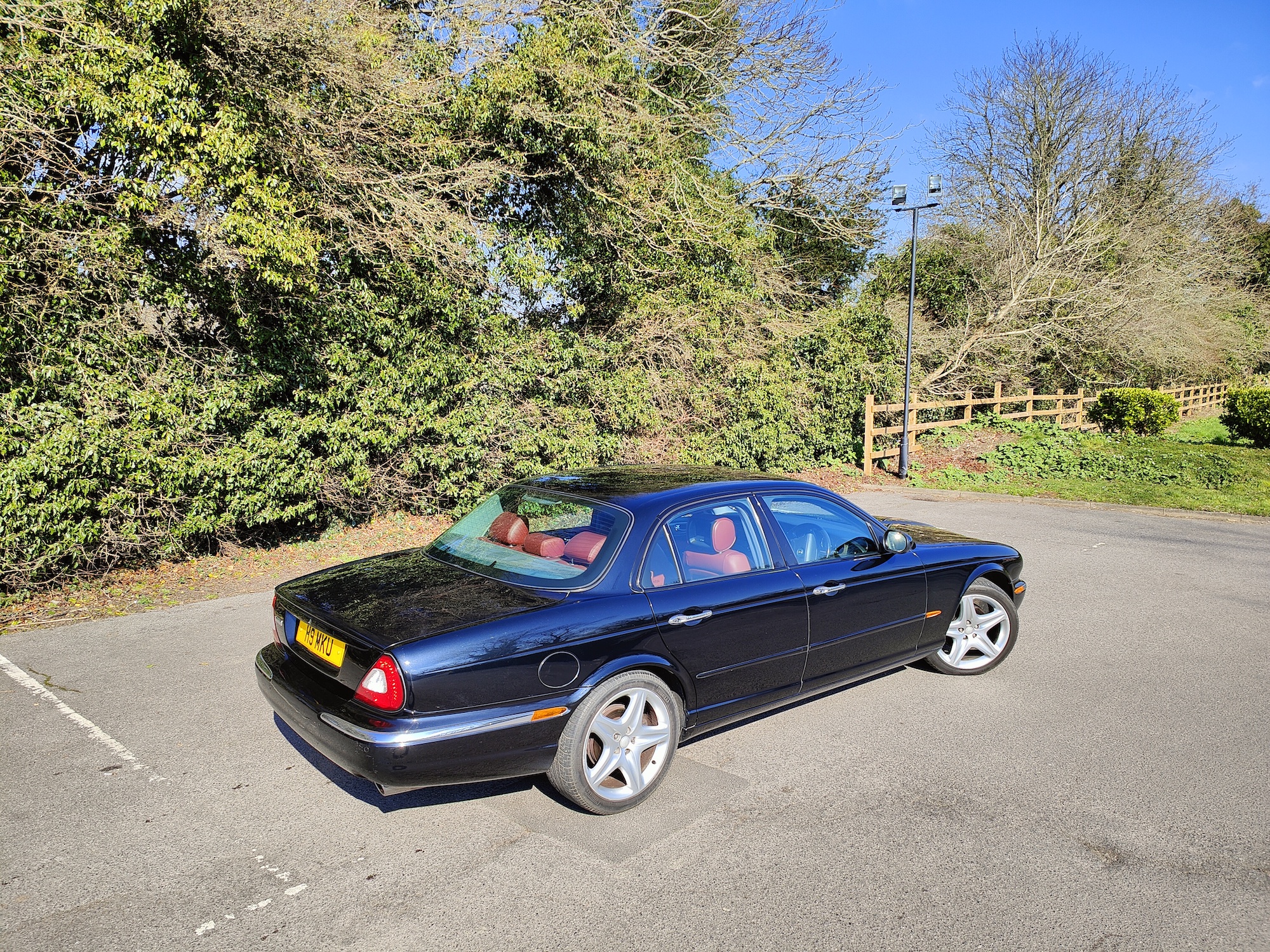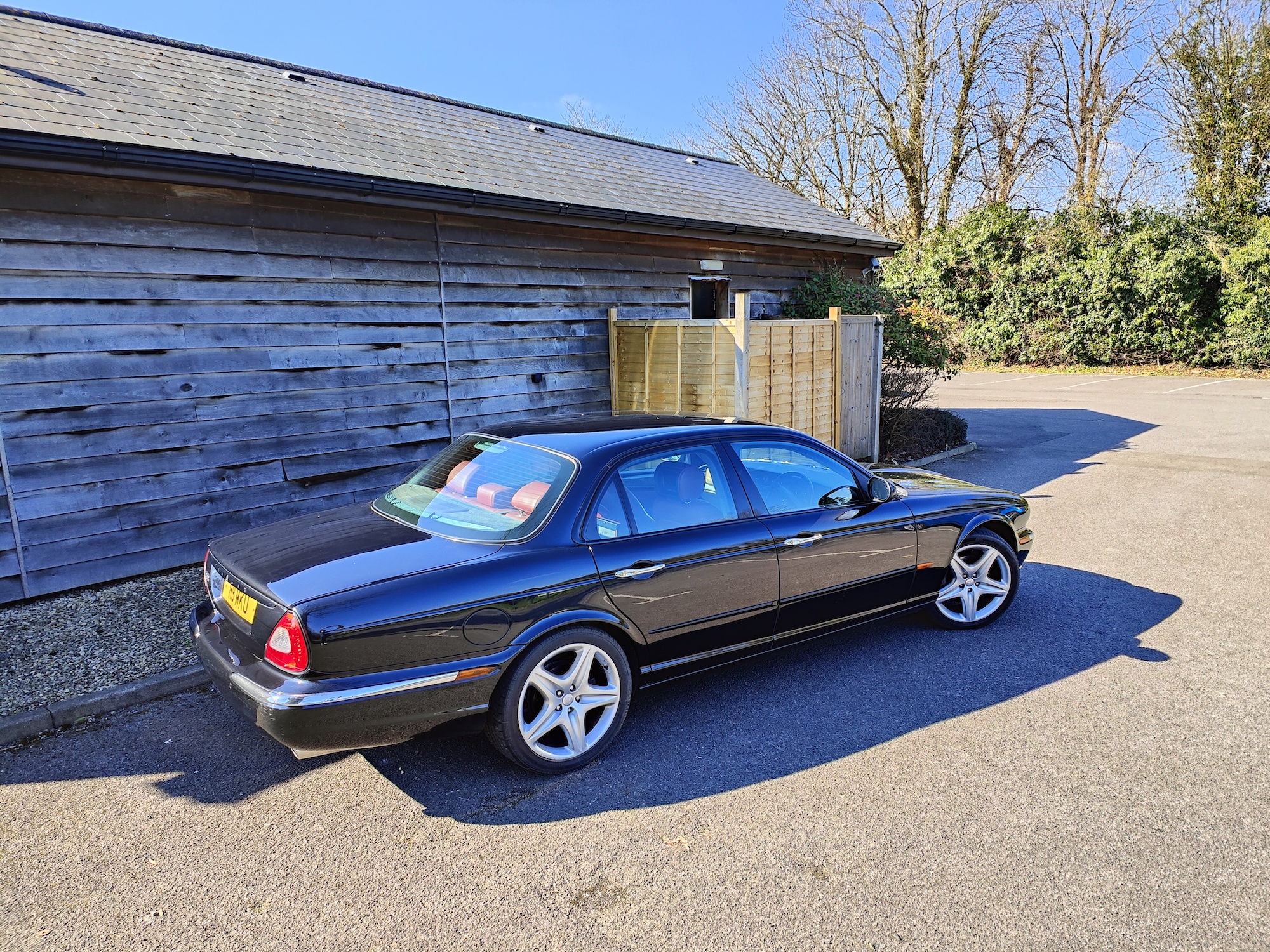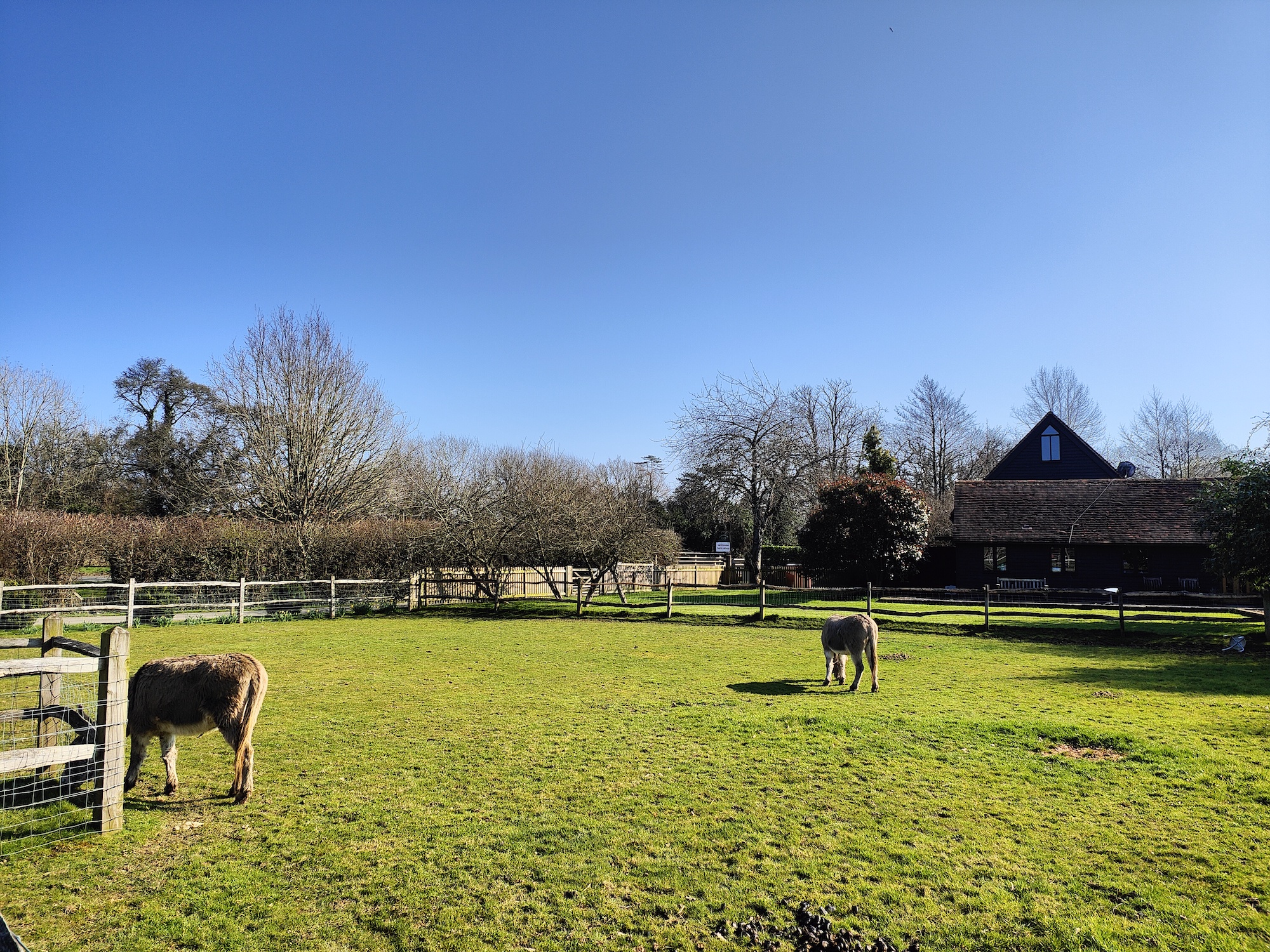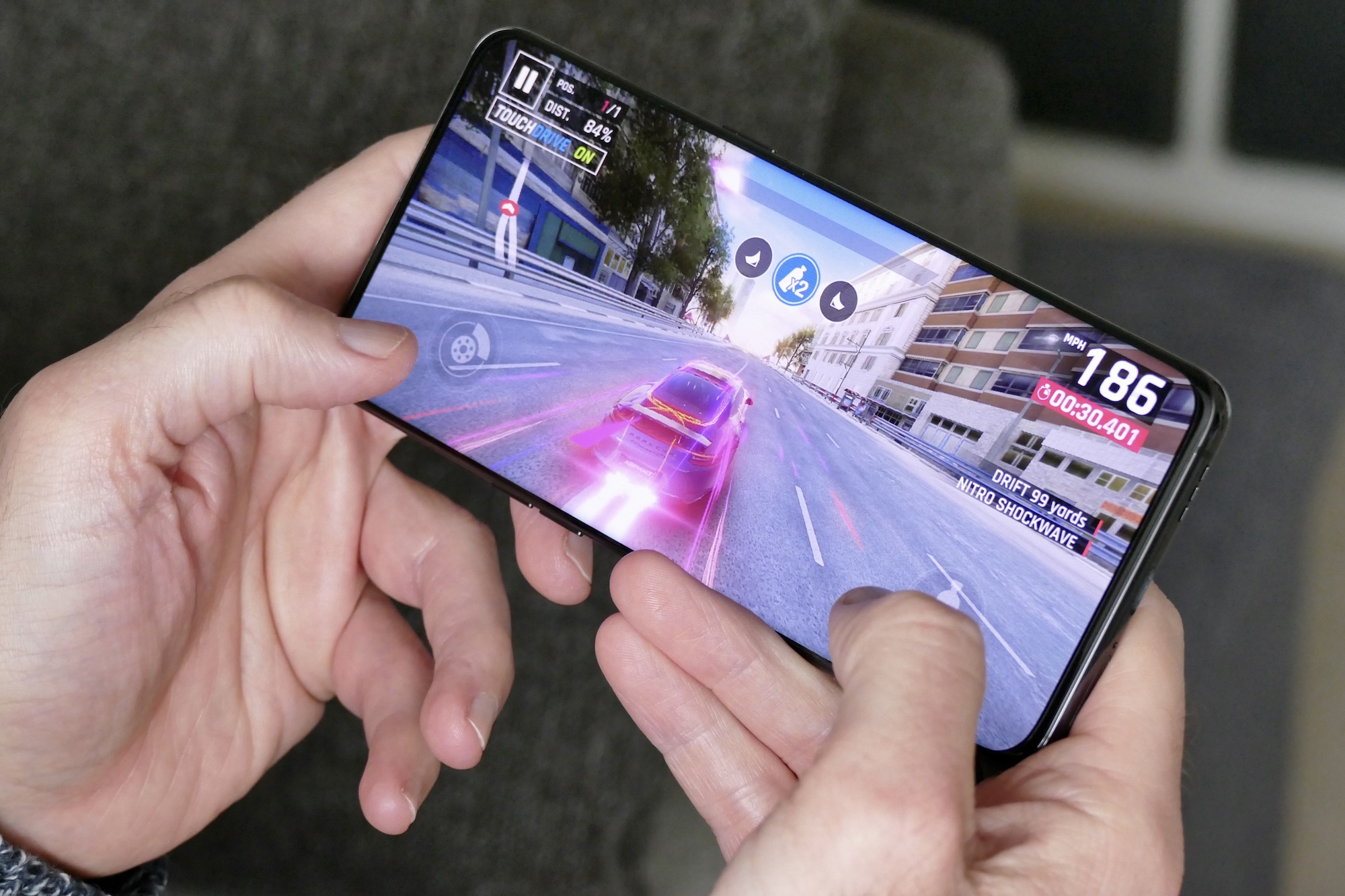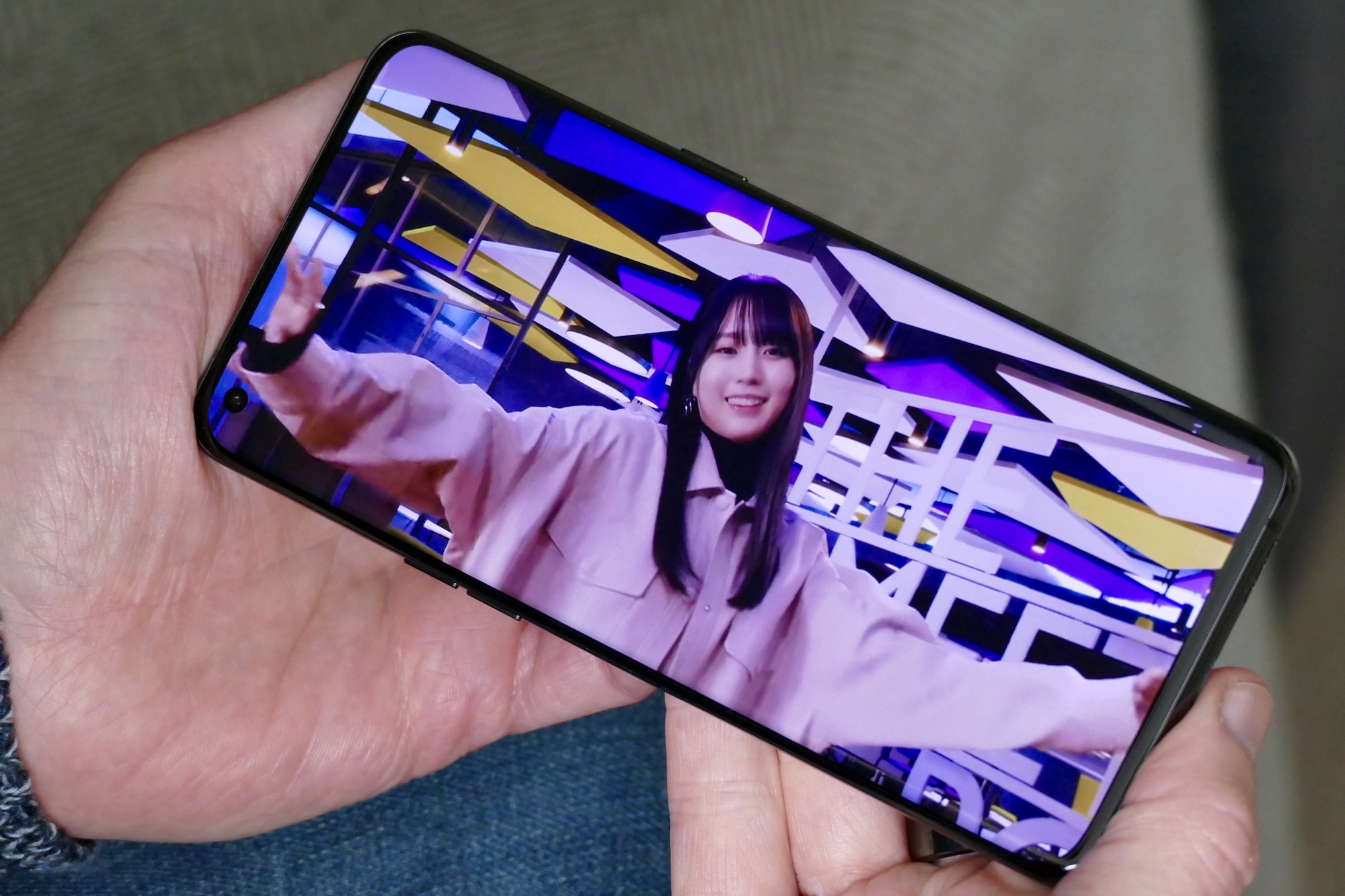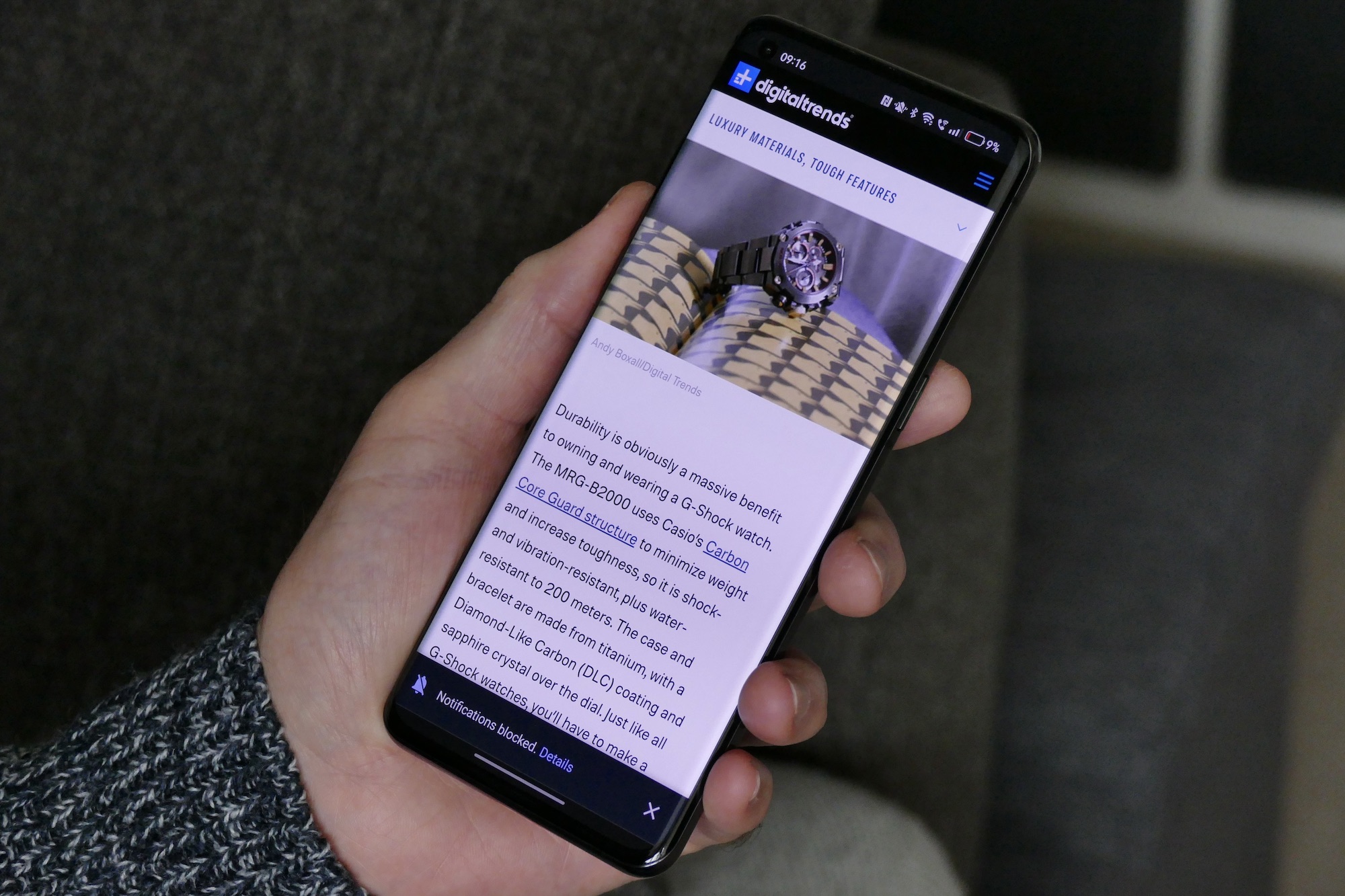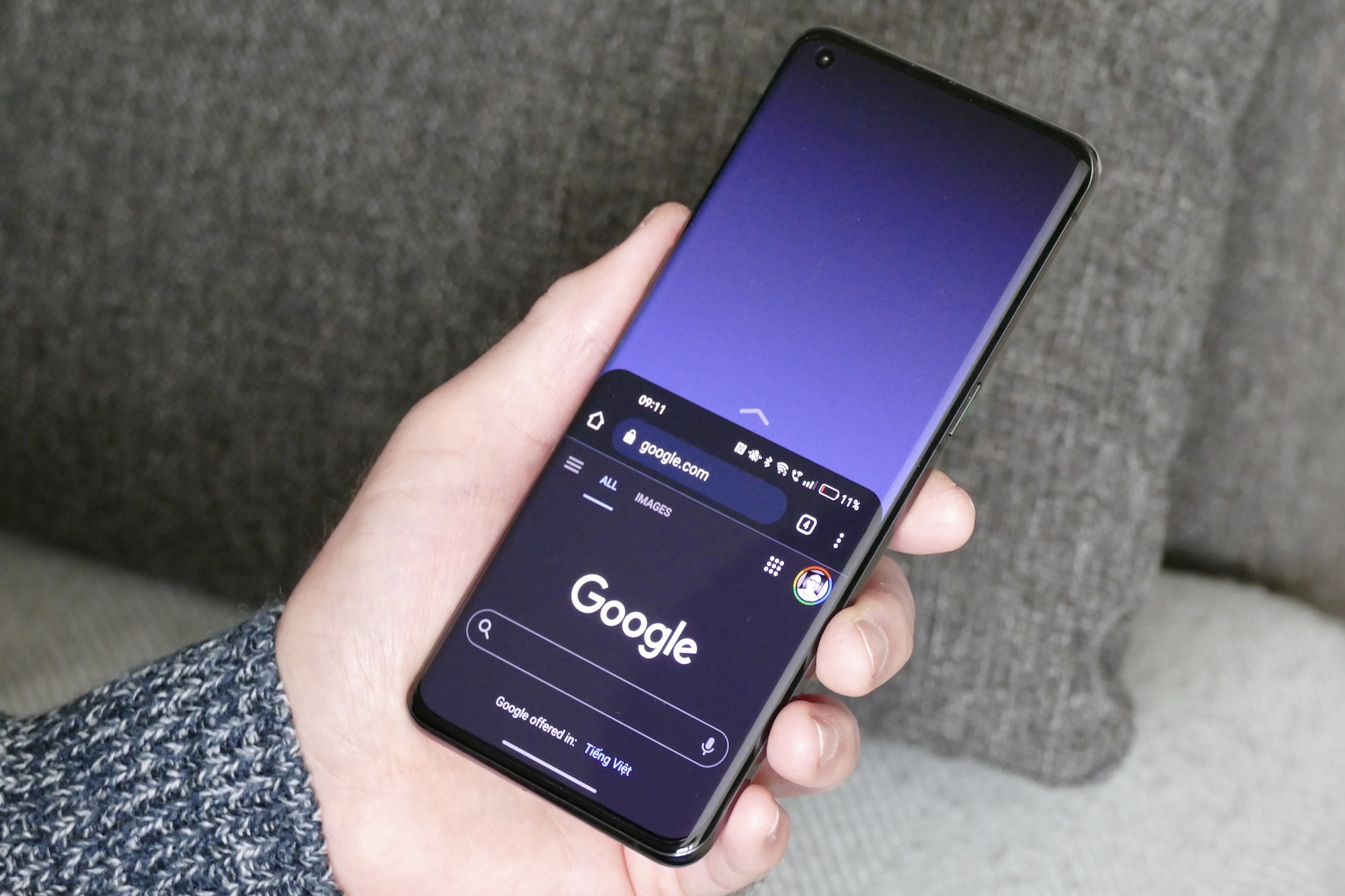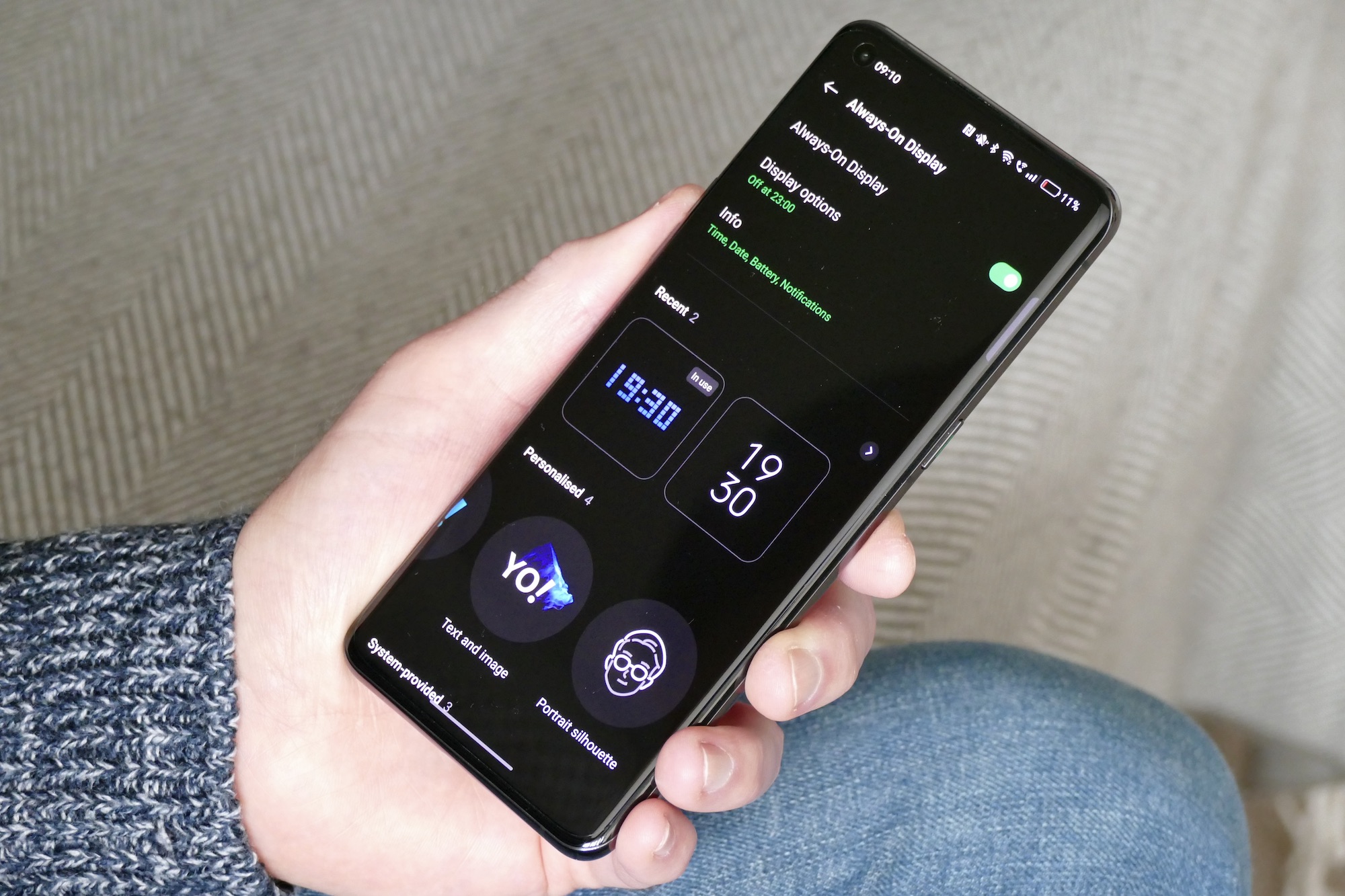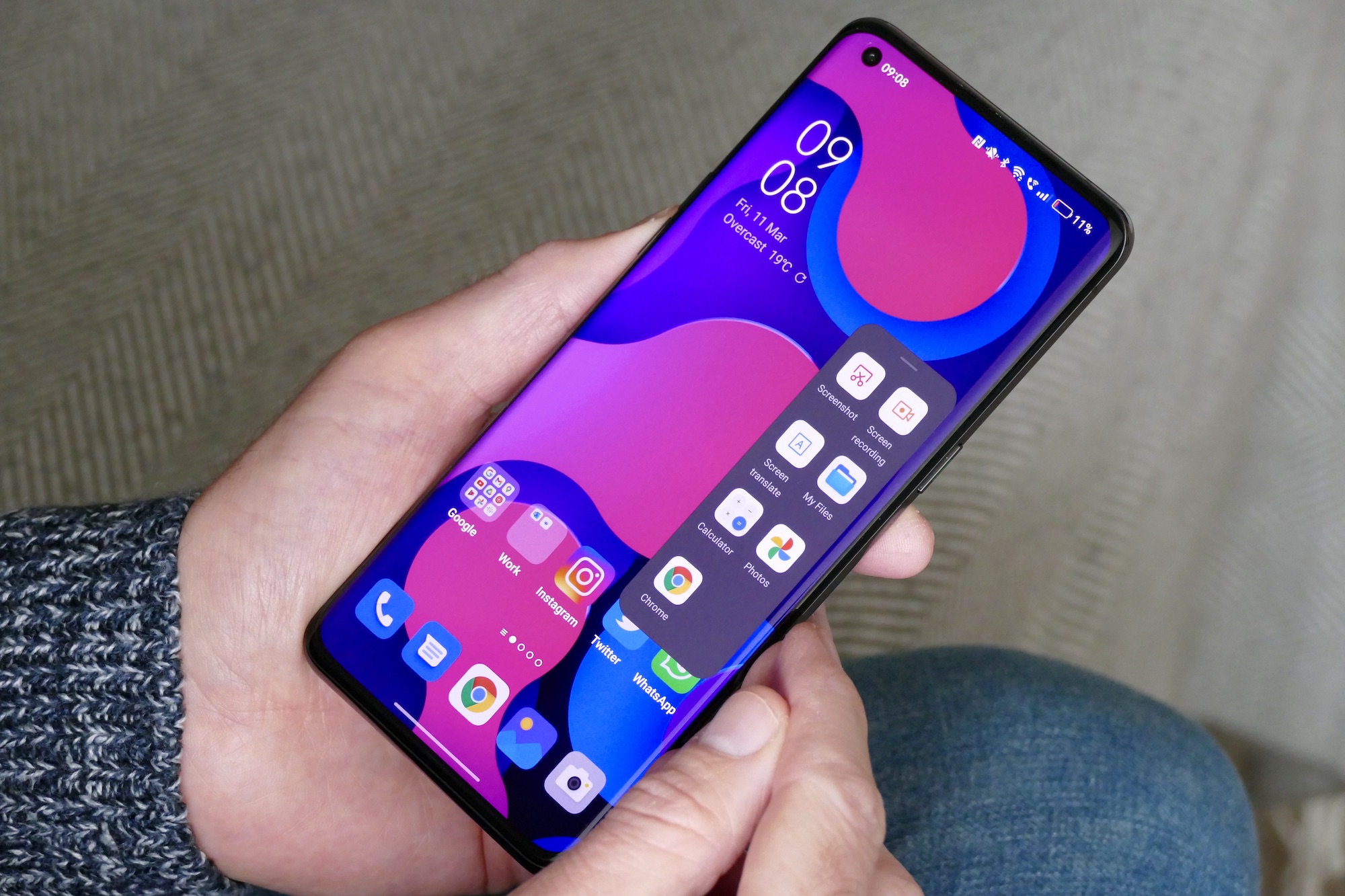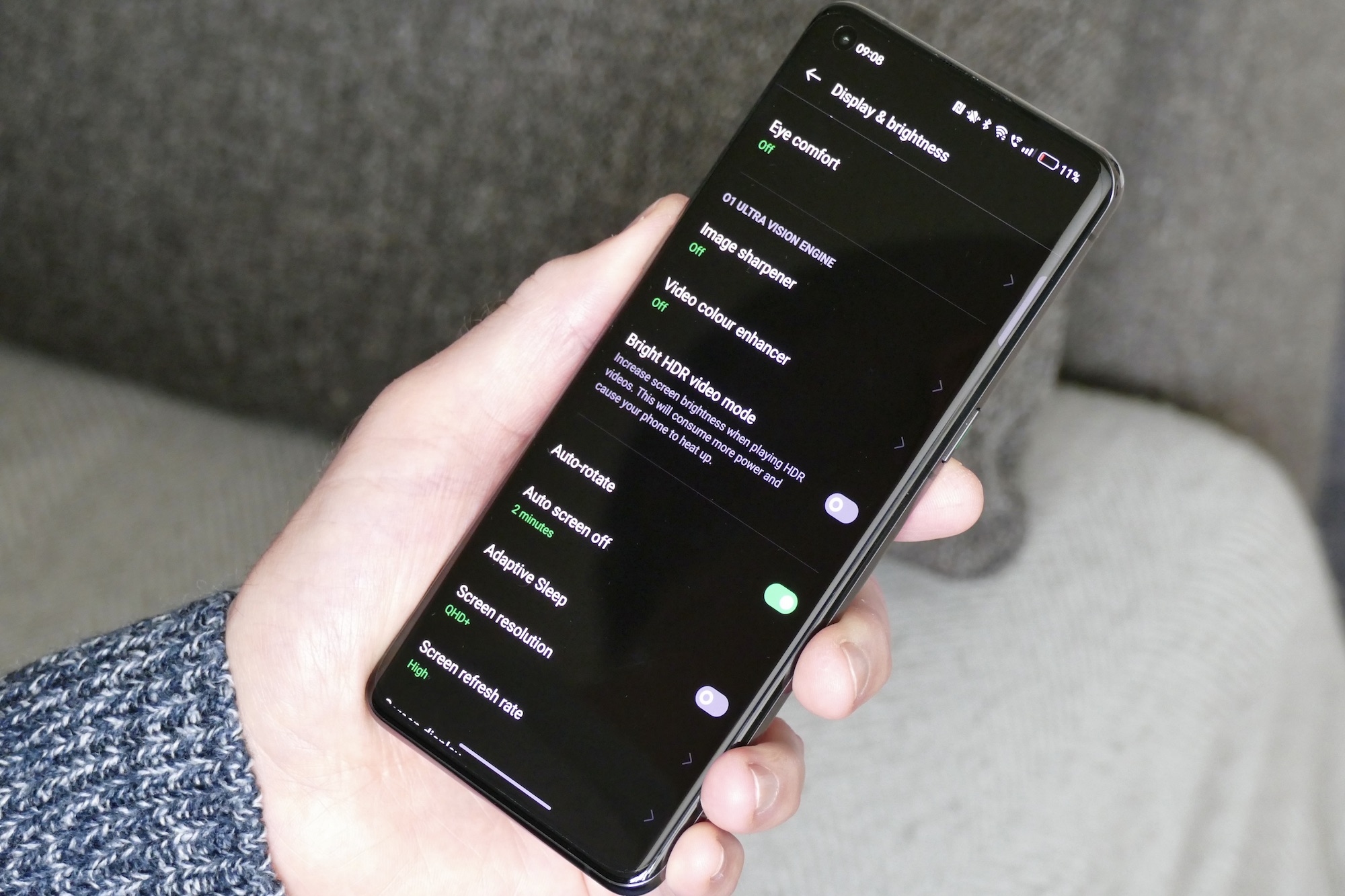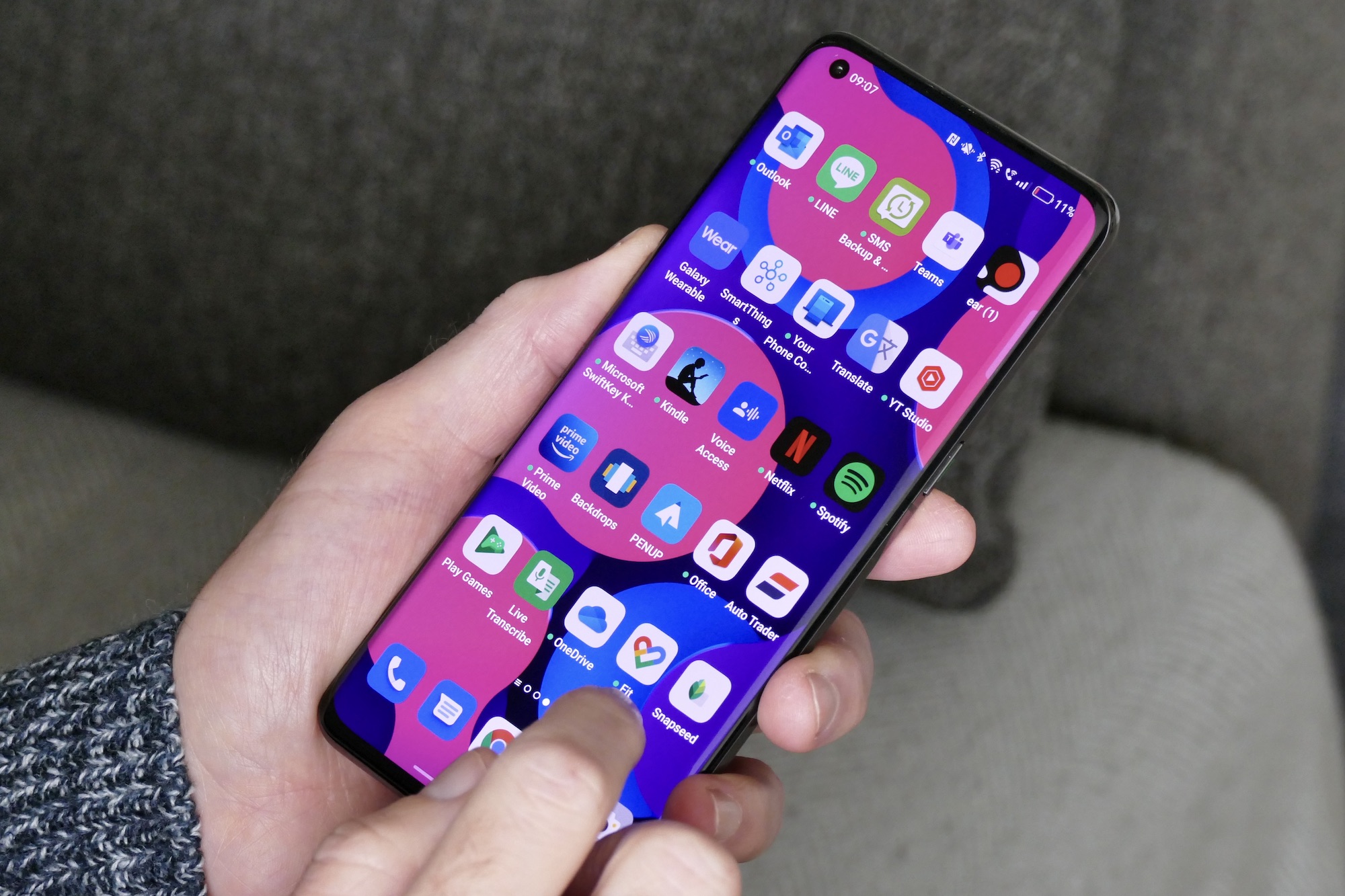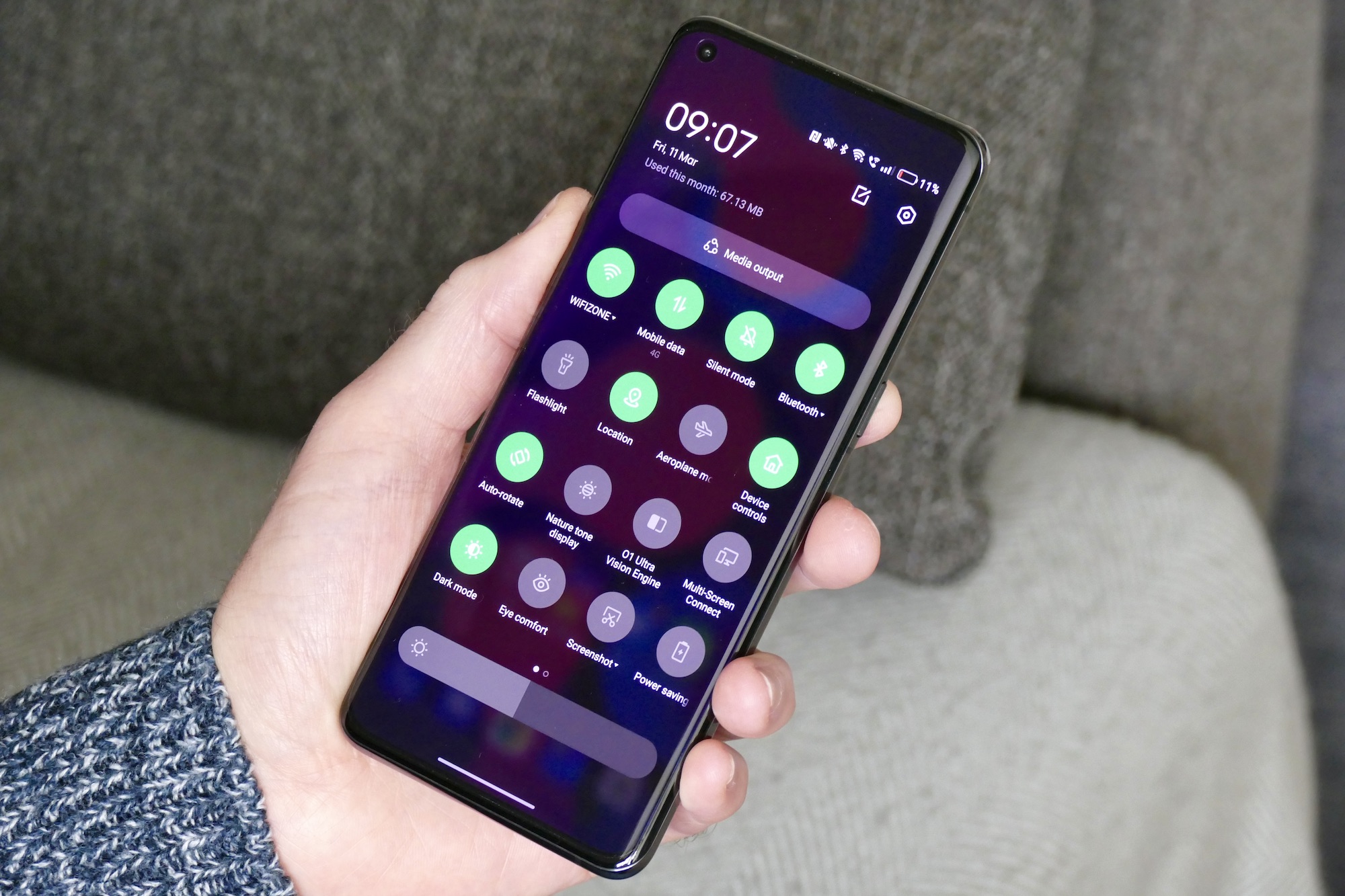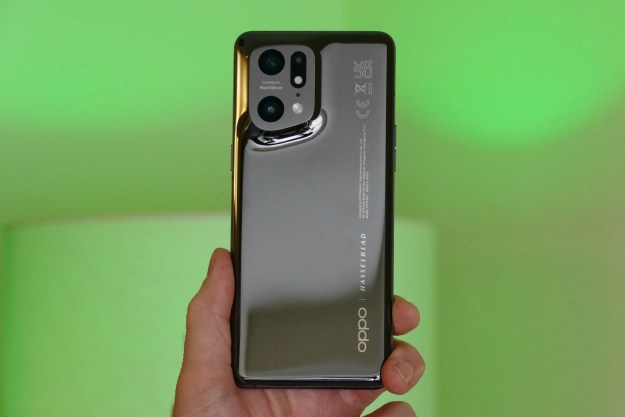
“The Oppo Find X5 Pro's lovely design, fast charging, and stunning screen can't make up for several missteps or the frustrating software, leaving us with a phone that's good, but not up to expectations.”
- Very fast battery charging
- Glorious 120Hz screen
- High-performance processor
- Beautiful design
- Compact body
- Frustrating software
- Camera is inconsistent
- Only a 2x optical zoom
Expectations around the Oppo Find X5 Pro are very high. The Find X3 Pro was a breakout device for the company and won it a lot of fans (me included), and it has been hyping up the Find X5 Pro and its camera for months now. When you first set eyes on it, the Find X5 Pro stuns with its superb design, but it’s what’s inside that usually shapes whether an Oppo phone is recommended or not. After two weeks with the Find X5 Pro, this is how it has fared.
Design
The Oppo Find X5 Pro is one of the most beautifully designed smartphones I’ve seen. The thought and effort put into making it pretty is clear from the moment you set eyes on the curvy ceramic rear panel. Just look at the way the camera module rises out of the case, ending in a shaved flat surface housing the camera lenses. The flowing shape of the body has a natural look, yet the flat module is so obviously machined, it’s almost part living thing and part machine. Replacing the Find X3 Pro’s matte glass with ceramic gives the phone a warmer, grippier texture. Polishing it to such a high-gloss finish emphasizes its curves.

It’s a lovely thing, but why throw it all away by not paying attention to the details? I understand the text next to the branding is a legal requirement, but Oppo’s decision not to lessen its visual impact comes very close to ruining the stark beauty of the Find X5 Pro. Unfortunately, Oppo’s promotional videos are misleading and show a clean rear panel on the phone, which is not what you get at all.
What about the new camera module shape? The 75-degree angle at the base of the module is apparently there to make the phone more natural to hold, as your finger won’t rub up against the edge as it may have done on the X3 Pro. While accurate — it does make more room for your finger — in most circumstances, you’ll hold the phone lower down on its body anyway.

The Find X5 Pro is compact and easy to hold and use with one hand. The 218-gram weight reminds you it’s made of ceramic and metal, and because it’s well-balanced, the phone doesn’t cause fatigue over long periods. It’s beautifully made and technically complex, too. Oppo says the ceramic panel takes 168 hours to produce and goes through 45 different processes before the final shape and finish are achieved. Take the ugly certification text away, and Oppo would have itself one of the most attractive smartphones ever made.
I am concerned about durability and am surprised how much of a beating the ceramic panel — supposedly more scratch-resistant than glass — has taken during the last two weeks. I haven’t used the phone with a case, and it’s either in my pocket or sometimes in a pocket in my bag when I’m out. It has taken a few spills on to carpet, but only from a couple of feet at the most, just because it’s a slippery thing and will move around on its own.
Generally, I’m very careful with phones, but despite this, the ceramic has collected a few scratches on the base, a serious scuff along the bottom edge, and even a small scratch on the camera lens. This is after two weeks, most of which has been spent in my home. For this reason, I’m going to strongly recommend you keep the Find X5 Pro in a case, and if it covers up that ugly certification text, all the better.
Camera
The Find X5 Pro has a 50-megapixel main camera with an f/1.7 aperture and a five-axis optical image stabilization (OIS) system, a 50MP wide-angle camera with an f/1.7 aperture, and a 13MP telephoto for 2x optical zoom. The unusual microscope camera from the Find X3 Pro has been removed.

Oppo has used the Find X5 Pro to debut its own MariSilicon X Neural Processing Unit (NPU), and also its newly signed deal with Hasselblad. The camera maker has worked on the color balance, added some filters, the XPAN mode seen on the OnePlus 9 Pro, and the Hasselblad Pro Mode, too. The Find X5 Pro also has a 13-channel Spectral Sensor, which will further enhance colors for a more natural look, and the cameras have a new glass lens for sharper detail and, again, improved colors.
The camera really can take beautiful photos when it wants, the edge recognition in Portrait mode is excellent, and selfies have true-to-life colors. There’s an automatic macro mode that kicks in when you get up close to something, and the results are crisp and sharp. Oppo has talked a lot about how the MariSilicon X improves night photography, and while it’s certainly good, I haven’t yet seen it improve over lowlight photos taken by the Galaxy S22 Ultra or the Pixel 6 Pro.
But it’s not all good news. For all of Oppo’s (and Hasselblad’s) talk of colors and color accuracy, this isn’t always the case. Greens and especially blues can be oversaturated, particularly when the sun is low. The galley below highlights some of these cases. See the photo of the donkeys in a field for evidence of just how much the Find X5 Pro can misjudge colors, then the two photos of a black car, where one has a heavy blue tint and overly processed background and sky, while the other is captured more accurately. It shows how the Find X5 Pro struggles in challenging light and can suffer from lens flare.
Also, the Find X5 Pro isn’t very consistent. This is a disappointment because that was the big thing about the Find X3 Pro. Although Oppo has used the same camera sensor for the main and wide-angle camera again, the wide-angle usually has a cooler tone, a different level of exposure, and a different treatment of colors. The inconsistency spreads to the main camera, as most of the time it takes good and sometimes even excellent photos, but will surprise once in a while with a stinker.
That’s not the end of the negatives. Hasselblad’s XPAN mode remains a gimmick, the choice of filters in the editing suite is poor, and the auto-adjustment setting almost always makes the photo look worse. But worst of all is the basic 2x optical zoom. It’s not that it doesn’t work; it’s that it feels like a token effort.
Oppo claims its internal research shows people don’t use the zoom mode very often, but I’ve found myself wishing for more flexibility several times while using the Find X5 Pro, because 2x doesn’t really make much difference. When you put the Find X5 Pro’s camera up against the Galaxy S22 Ultra’s camera, it ends up feeling rather feature-light, and that limits creativity and fun.
I definitely struggled to see where Hasselblad has improved the camera experience on the Oppo Find X5 Pro or generated natural colors, but I still believe there’s more to come from the MariSilicon X NPU and look forward to software updates improving the camera over time. It’s not a bad camera, but I expect a lot more from it, and at the moment it can’t compete with the well-rounded S22 Ultra or the Pixel 6 Pro.
Screen and performance
The 6.7-inch AMOLED screen has a 3216 x 1440 pixel QHD+ resolution, a maximum refresh rate of 120Hz, HDR10+ certification, and Gorilla Glass Victus over it for protection. A Qualcomm Snapdragon 8 Gen 1 processor is accompanied by 12GB of RAM and 256GB of storage space. It all comes together to make the Find X5 Pro a lovely phone to use.

I can’t fault the performance or the screen. Video is beautiful, games are fast, and the screen is responsive at all times, plus the slick dynamic 120Hz refresh rate makes it easy on the eyes and super smooth at all times. Despite the curve down the side, I haven’t experienced many phantom touches at all. I have been frustrated by the auto-brightness, which seems especially dim-witted and has pointlessly chosen almost zero brightness on many occasions.
The relatively compact size and light weight make it easy to enjoy all of this. The phone is just so enjoyable to hold — I can play games or support the phone with one hand without fatigue. It’s a very easy phone to live with. The audio through the stereo speakers is spacious and rich, perfectly matching the stunning visuals.
Software
Now we come to ColorOS 12, built over Android 12. I find it very difficult to feel at home with it. It’s very colorful and very smooth, and although I do find some menus aren’t snappy enough for my liking, I got used to it. By far the worst part of ColorOS is how much work it makes you do. There’s so much stuff going on, and so many customization options that it feels like the designers didn’t really know what the best approach was, and decided to just leave it to you to figure out. While the depth of customization may please some, to me it just excuses bad or lazy design.
Many of the phone’s top or most helpful features are off by default so you are forced to dig to get the best from the phone. When you do, the wealth of options to toggle, modes to understand, and decisions to make mean that it’s hard to just make the phone work in a satisfactory way immediately. This applies to the screen, audio, haptics, battery, and almost every other function, and it all just becomes a bit of an effort. I end up just living with the way it is because it’s a game of multiple choice when I do try to change it. I don’t experience this so drastically with Android 12 on the Pixel or Samsung’s OneUI, and not at all with iOS.
Then there are the little annoyances. Why give me the choice of a drawer or home screen location for my apps, and then when I select the drawer option, just dump all the app icons over home screens too? Why automatically add a useless shortcut bar to the side of the screen, but not activate the always-on screen, which is actually helpful? The new haptic engine has a pleasing feel, but it’s very weak (even with it turned up to maximum in the dizzying number of options — are you seeing a pattern here?) I missed a lot of notifications due to it. Plus there are so many preinstalled apps and multiple pointless shortcuts added to the screen.
While the depth of customization may please some, to me it just excuses bad or lazy design.
Fortunately, most of the preinstalled apps can be uninstalled, you can remove the icons from the home screen, and after you’ve spent time with ColorOS, all the settings will eventually be tailored to your liking. But it’s an awful lot of effort and not an especially friendly approach to take, particularly as this is what you deal with during your first days with the phone.
Battery, charging, and connectivity
The Find X5 Pro’s battery and charging system are extremely impressive. I’ve consistently gotten two days from the 5,000mAh battery with moderate use, which is around three to four hours of screen time each day, but without playing games. When I streamed video for a few hours, the phone’s battery was down to around 30% at the end of the day. This was done using the phone on its default display settings, where the screen resolution is set to FHD+ resolution and 120Hz, but not the full QHD+ resolution. Up the resolution and the battery does take a serious hit, and even with moderate use, it’ll only last one full day.

Oppo’s SuperVOOC fast-charging system promises to deliver a 50% charge in just 12 minutes, and it absolutely does. In fact, plug it in with 1% charge and it’ll reach 50% in 11 minutes. It gets warm to the touch, but never hot. After 30 minutes, it will reach 100%. The Find X5 Pro’s SuperVOOC charging really does change the way you power up your phone. It’s not necessary to put it on charge overnight anymore when it’ll have enough power for a working day by the time you’ve showered in the morning.
The initial boost to 50% is great, but the total charging time is barely any faster than the Find X3 Pro managed, or that you get from the OnePlus 9 Pro. Use a compatible 50-watt wireless charging pad and the battery will reach 100% in 50 minutes. Oppo has worked on making the battery last too, promising that even after 1,600 full charge cycles — that’s once a day for the next four years or so — it’ll still utilize 80% of its capacity.
The Find X5 Pro’s SuperVOOC charging really does change the way you power up your phone.
The Find X5 Pro has Sub-6 5G and Wi-Fi 6, and I have had great reception throughout my use, plus a long Wi-Fi range. It has Bluetooth 5.2, and the addition of AptX and AptX HD for audio is welcome. There isn’t a 3.5mm headphone jack though, but there is NFC for mobile payments. The in-display fingerprint sensor keeps the phone secure, and it has proven to be fast and reliable.
Price and availability
The Oppo Find X5 Pro will be released in the U.K. on March 24 in both glaze black (seen in our photos) and ceramic white for 1,049 British pounds. This converts over to around $1,485. Oppo does not officially sell its smartphones in the U.S., but it would be possible to import one, and Oppo says the phone supports North American 5G bands, which should give you some confidence to do so.
Our take
Oppo hasn’t quite delivered with the Find X5 Pro. After the success of the Find X3 Pro, the promise of the MariSilicon X NPU, and the visual impact of the phone in its promotional material, it is a little underwhelming after spending time with it. While the screen is glorious, the fast charging brings masses of convenience, and the performance capability is enormous, this isn’t quite enough to make it a must-buy.
The problems: The design is beautiful but marred by the legal text and durability concerns, the camera can take excellent photos but is inconsistent and feature-light, and the phone’s plus points mentioned above are mostly equal to the Find X3 Pro.
There’s nothing broken on the Find X5 Pro at all and because of this it’s not right to give it a low score, but the software frustrates and key aspects of the hardware don’t work as well as they should, and this makes the ownership experience less satisfying than with phones without such concerns.
Is there a better alternative?
Yes. The $899/849 British pounds Google Pixel 6 Pro and the $1,199/1,149 pounds Samsung Galaxy S22 Ultra both have better cameras and software while matching the Find X5 Pro’s screen performance. While the designs aren’t quite as beautiful, they’re still eye-catching, but you will miss out on the Find X5 Pro’s supe-fast battery charging.
The $999/949 pounds Apple iPhone 13 Pro or $1,099/1,049 pounds Pro Max are also excellent choices if you aren’t settled on an Android phone. The cameras are good, the screens stunning, and the software experience beats all of the above phones. If you own a Find X3 Pro, there’s little reason to upgrade to the Find X5 Pro.
How long will it last?
Oppo is promising three years of major Android version updates and four years of security updates. This represents a good level of support, but can’t quite match Samsung’s four years of major Android version updates, or Google’s five. These updates may not arrive as quickly as they would on the Pixel 6 Pro either, due to Oppo having to modify ColorOS before it’s delivered to your phone.
The Find X5 Pro has an IP68 water-resistance rating, but as mentioned, the ceramic case has already picked up scratches, so a case is highly recommended. The latest Qualcomm processor means it has plenty of power. Expect it to last for three years at least, provided you’re fine with the basic zoom capability of the camera.
Should you buy one?
No. It’s unfortunate, but the Find X5 Pro’s camera isn’t polished enough to beat the competition, and the software really can frustrate.
Editors' Recommendations
- The Oppo Find N will be among the first foldables to try Android 13 Beta 1
- Camera fans, get ready for the Oppo Find X5 on February 24
- OnePlus 10 Pro, Oppo Find X4, Realme GT 2 Pro get 125-watt fast charging
- High-end tablet takedown: Lenovo ThinkPad X1 Tablet vs. Microsoft Surface Pro
- The Oppo Reno4 Pro 5G is technologically tempting, but struggles with pricing
